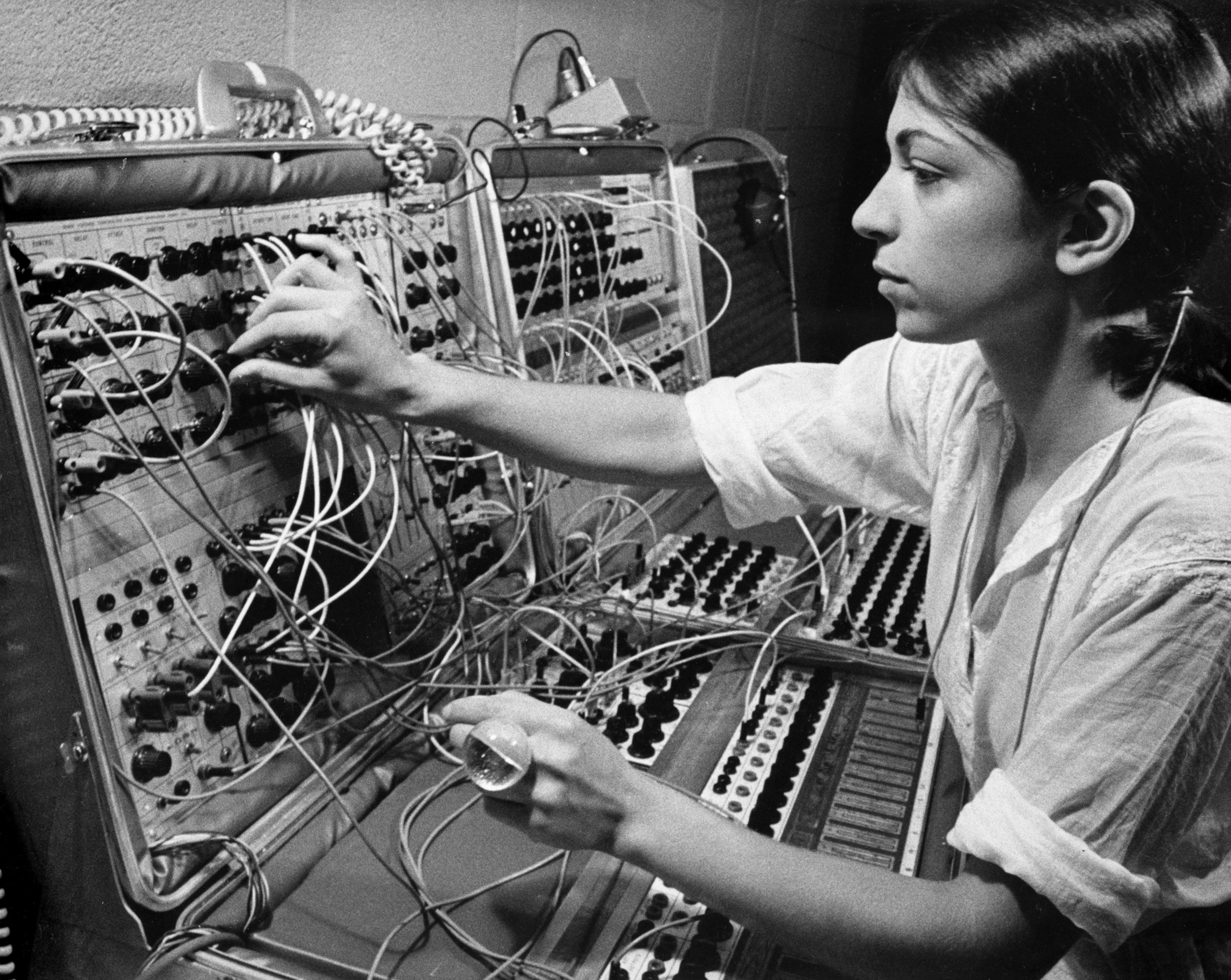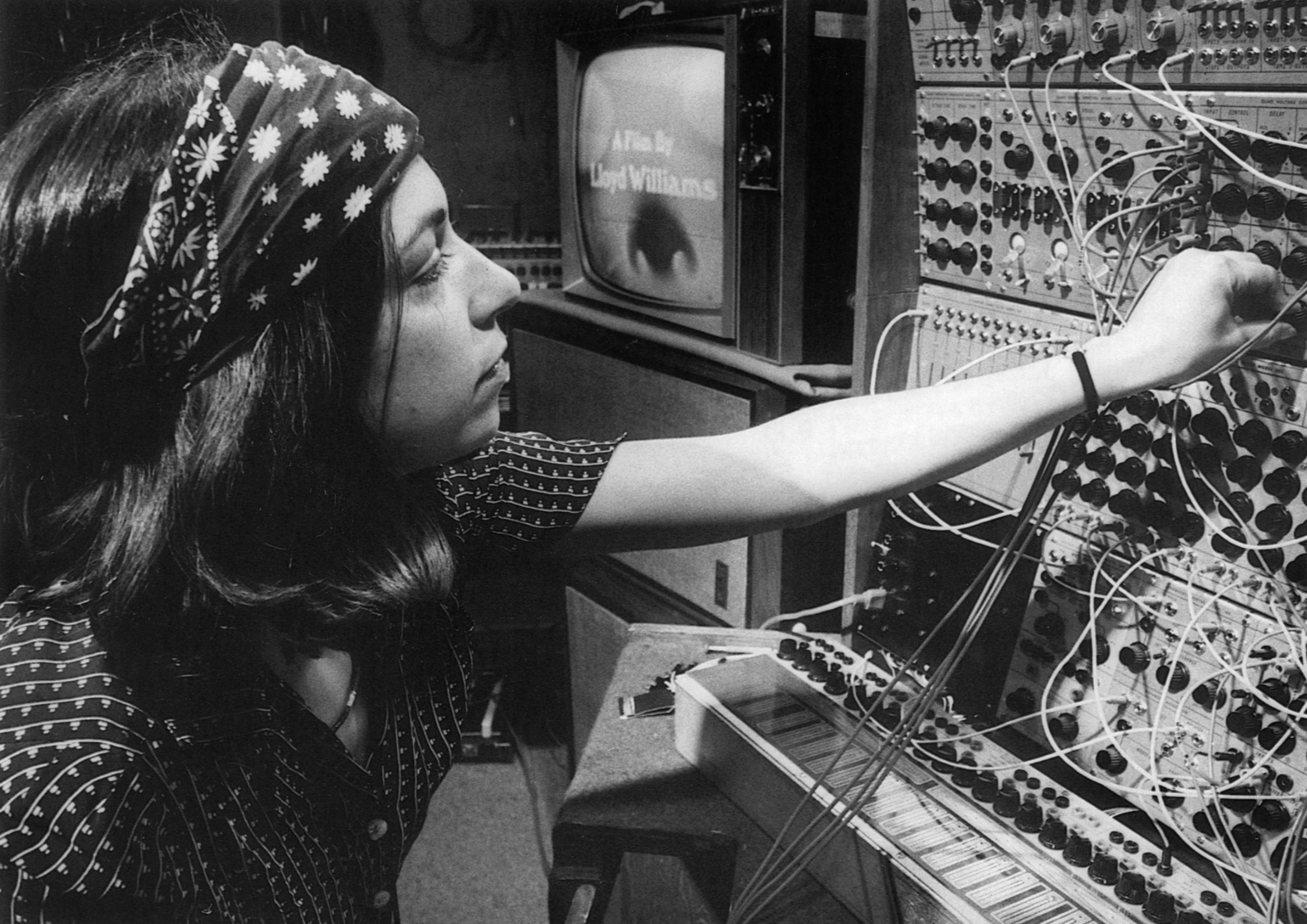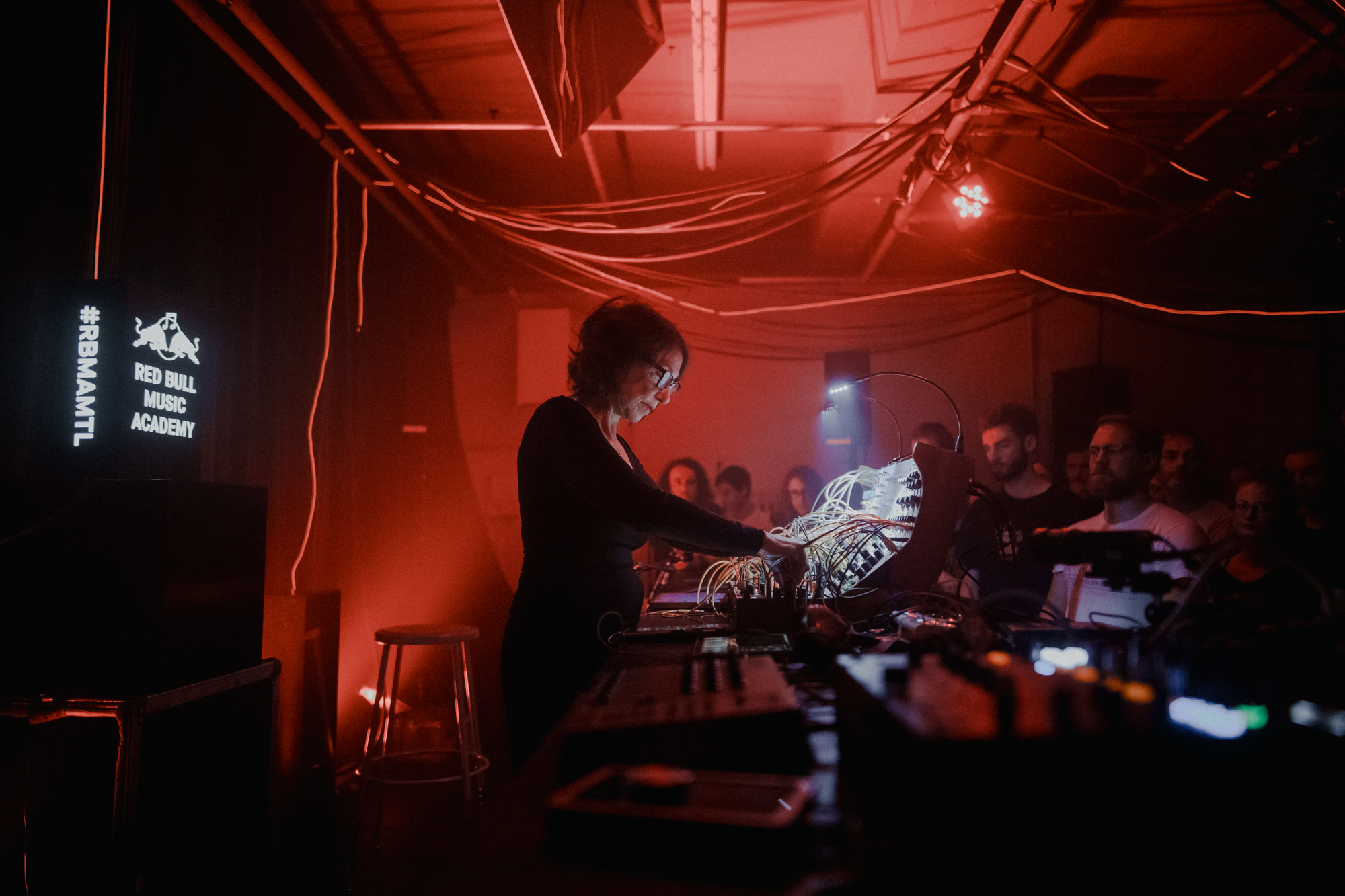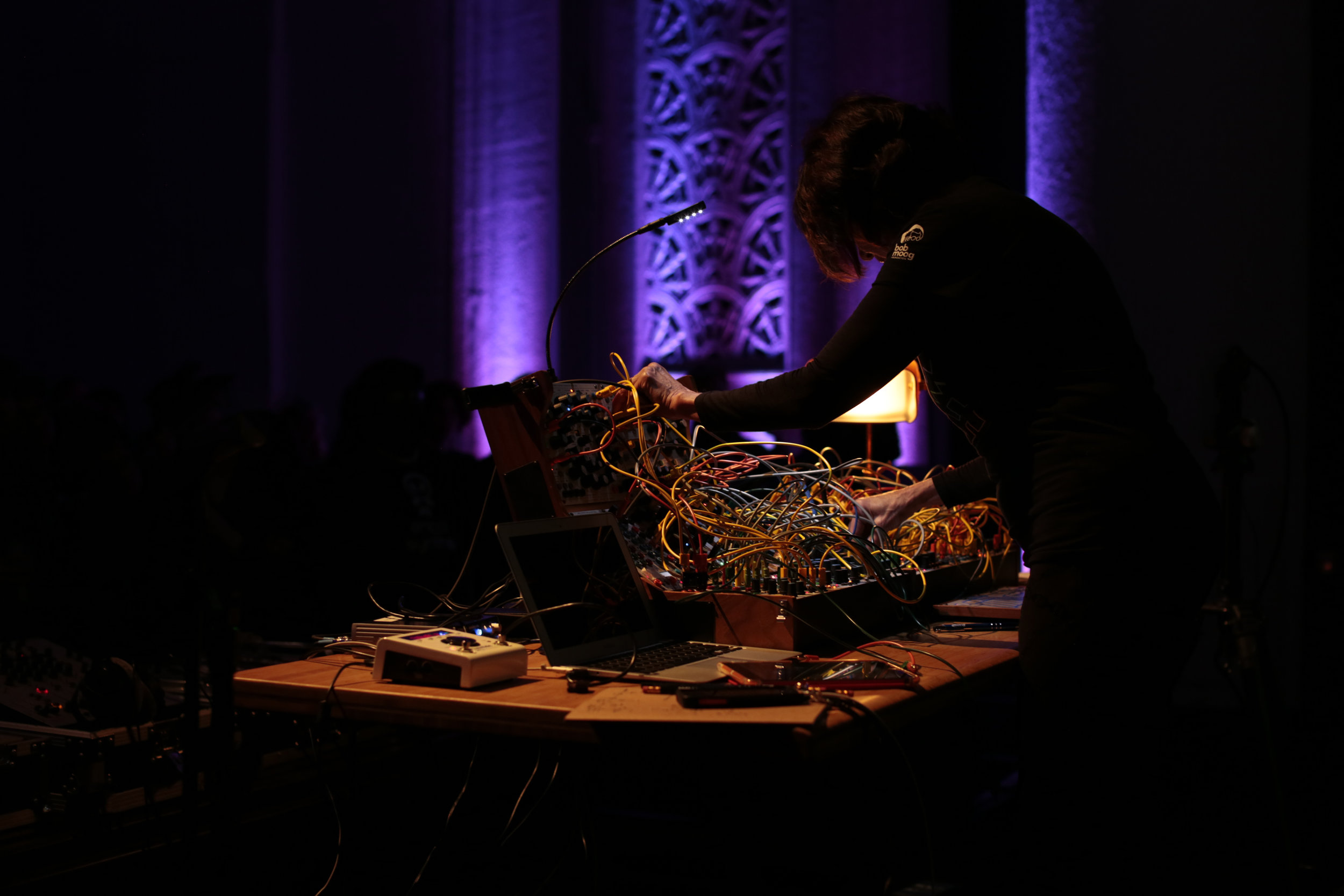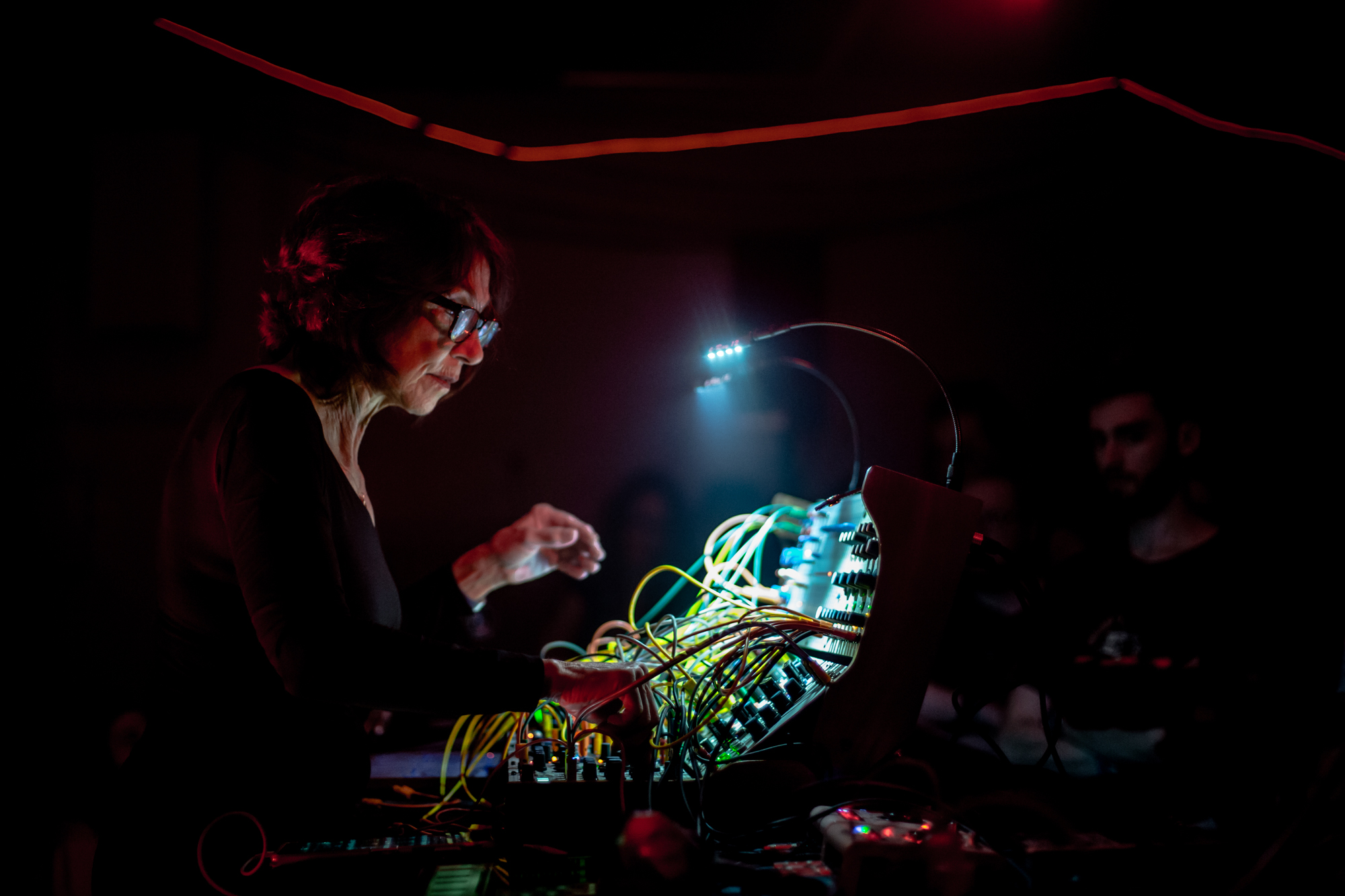Suzanne Ciani in Philadelphia
A special engagement in Philadelphia with legendary Buchla synthesizer and electronic music pioneer Suzanne Ciani was part of the project Making/Breaking the Binary: Women, Art & Technology (1968-1985) co-presented with the University of Pennsylvania's Department of Music's 2017 series MUSICA PRACTICA / ELETTRONICA VIVA and Ars Nova Workshop. This performance marked her Philadelphia debut and a rare return to the instrument she helped define and innovate, the Buchla modular synthesizer.
The two-day engagement offered an unprecedented opportunity to experience both Ciani's Buchla synthesizer and piano compositions — the first time a dual program has been presented in her 40-year career. Ciani's 5pm conversation on Wednesday, March 29, 2017 at International House Philadelphia with curator Kelsey Halliday Johnson overviewed her multi-faceted career, followed by a Buchla performance in quadraphonic sound at 8pm. Ciani's piano performance took place on Thursday, March 30, 2017 at the Painted Bride Art Center.
About the artist
Suzanne Ciani is a composer, neo-classical recording artist, and widely celebrated as one of the most significant early voices in electronic music. Ciani released 15 solo albums and produced some of the most iconic sounds with her production company Ciani-Musica, Inc. for a generation of commercials, video games, pinball machines, and film programs. Her many recognitions include five Grammy nominations and Keyboard Magazine’s “New Age Keyboardist of the Year.” In 2016 alone, Ciani performed at Moog Fest, the Moving Sounds Festival (her first New York solo performance since 1975), the Machines in Music Festival, and was the subject of a feature documentary, A Life in Waves.
Details
March 29th 2017 -
International House
5pm - Free conversation with Ciani
8pm - Buchla concert, quad sound
Information at ihousephilly.org
March 30th 2017 -
Painted Bride Art Center
8pm - Solo piano concert
Information at paintedbride.org
Above photograph by Jaime Alvarez.
"Suzanne Ciani, a slightly built, dark‐eyed 28‐year‐old, does not wear steel‐rimmed glasses, talk in abstract gibberish, move like robot or conform to other misconceptions one might have about a player and composer of electronic music."
—Helen Epstein, The New York Times, 1974
"Ladies and gentleman, this woman standing next to me is an electronic wizard."
— David Letterman, 1980
"It's not everyday you get to speak with a living legend, and if anyone deserves that title, it's synth pioneer and five-time Grammy nominee Suzanne Ciani, whose groundbreaking work with the modular Buchla synthesizer is the stuff of ambient folklore."
— Sandra Song, Paper magazine, 2016

